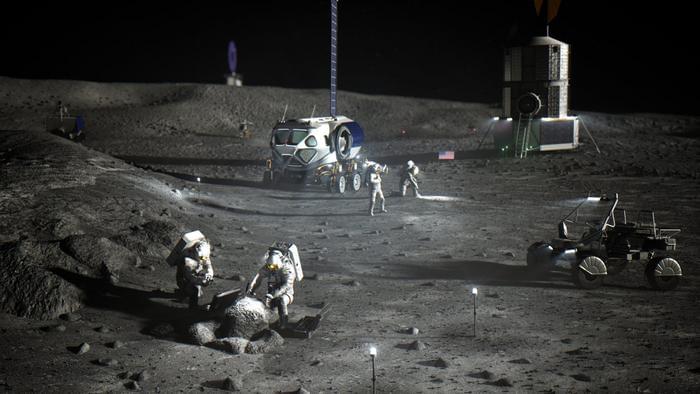
Humanity’s journey into space is no longer just about exploration. With the Moon and Mars on our horizon, sustainability has become a key concern. Ensuring that our ventures are sustainable is critical for long-term survival and success.
Resource Utilization and Preservation
Local Resources for Survival
The Moon and Mars present unique challenges. The Moon lacks an atmosphere, while Mars has a thin one, exposing us to harmful radiation and extreme temperatures. To sustain human life, we must utilize local resources efficiently. On the Moon, this involves mining regolith for oxygen and extracting water from ice deposits. Mars offers frozen water and atmospheric carbon dioxide, which can be used to produce essential resources like water, oxygen, and fuel. Proper management of these resources is vital to minimize dependency on Earth-based supplies, which are expensive and logistically challenging to deliver.
Sustainable Habitats
Building Resilient Habitats
Creating habitats that can endure the harsh environments of the Moon and Mars is crucial. These habitats must be capable of recycling air, water, and other vital resources. Advanced life support systems, such as closed-loop systems for water purification and oxygen regeneration, are essential. Additionally, sustainable food production through methods like hydroponics and aquaponics will be necessary to provide a continuous supply of fresh food, reducing the need for supplies from Earth.
Environmental Protection and Ethical Considerations
Protecting Pristine Environments
Sustainability on the Moon and Mars extends beyond resource management to environmental protection. These celestial bodies offer invaluable scientific insights into our solar system’s history. Contamination from Earth could compromise these studies and pose risks to potential Martian life forms. Adhering to planetary protection protocols ensures responsible exploration, preserving these environments for future generations.
Technological Innovation and Collaboration
Innovative Solutions for Sustainability
Achieving sustainability on the Moon and Mars requires technological innovation and international collaboration. Energy solutions, such as solar power, must be adapted to the unique challenges of each environment, including long lunar nights and Martian dust storms. Technologies developed for space can also benefit Earth, advancing renewable energy, recycling systems, and sustainable living practices.
Global Collaboration
International cooperation is essential. Space agencies like NASA, ESA, and Roscosmos, along with private companies like SpaceX, are pooling resources and knowledge to tackle these challenges. This collaboration not only spreads the financial and technical burdens but also fosters a spirit of unity in the face of universal challenges.
The Broader Impact on Earth
Lessons for Earth
The pursuit of sustainability on the Moon and Mars serves as a reminder of our responsibilities on Earth. The closed-loop systems and efficient resource management necessary for survival in space can inspire more sustainable practices on our home planet. As we push the boundaries of exploration, we also enhance our understanding of sustainable living.
Conclusion
A Moral Imperative
Sustainability on the Moon and Mars is not just a logistical challenge; it is a moral imperative. Responsible exploration ensures that we preserve these new worlds for future generations while gaining insights that can help solve sustainability challenges on Earth. The Moon and Mars offer us an opportunity to refine the technologies and philosophies that will guide human civilization through the 21st century and beyond. Our future in space, like our future on Earth, depends on our ability to innovate, collaborate, and respect our environments.
